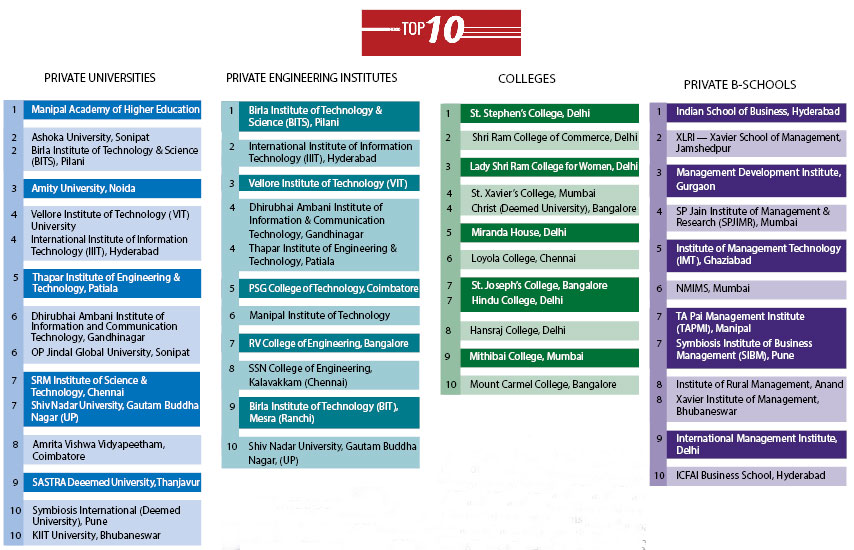To compile the EWIPHER league tables this year, C fore field representatives interviewed 9,914 academic faculty, industry representatives and final year students to rank the country’s Top 100 private universities, engineering institutions, arts, science and commerce colleges and Top 100 private B-schools – Dilip Thakore As usual, publication of the annual EducationWorld India Private Higher Education Rankings 2019-20 survey to rank the country’s Top 100 private universities, engineering institutes and arts, science and commerce colleges as also the Top 100 private business management schools has coincided with release of the National Institutional Ranking Framework (NIRF) 2019 of the Union human resource development (HRD) ministry. NIRF also ranks the country’s top universities, engineering institutes, colleges and B-schools plus professional education institutions (law, pharmacy, architecture, medicine) inter se in separate league tables. This year’s NIRF Report 2019 was released to the public by President Ram Nath Kovind on April 8. But although the annual EW India Private Higher Education Rankings (EWIPHER) are pre-empted by the HRD ministry’s ‘official’ ranking every year, it’s pertinent to bear in mind that there are significant differences of purpose and institution assessment methodologies between the government-published NIRF and the annual institutional ratings survey conducted by EducationWorld. Essentially, EWIPHER is a nationwide field survey, while NIRF is a desk job. Moreover while the NIRF Rankings are open to all higher education institutions, ‘participation’ is voluntary. Higher education institutions desirous of being included in the NIRF Rankings are obliged to download a prescribed information form from the HRD ministry’s website and fill in all requested particulars. On the other hand, institutional ‘participation’ in the annual EWIPHER is not optional. Indeed it’s compulsory, inasmuch as all sufficiently well-known (i.e, rated by more than 25 sample respondents) institutions are evaluated by carefully selected sample respondents including academy faculty, industry representatives and often final year students, whether they (institutions) like it or not. This is because we are not dependent upon institutions submitting data or evidence in support of their achievements under any parameters of education excellence. Rather than rely upon data submitted by assessee institutions which may be inflated, we prefer to rely upon perception scores awarded under 10-12 parameters of higher education excellence (faculty competence, research, leadership, intake/ selection process, diversity of study programmes offered etc) by faculty, industry reps and students with experience and knowledge of assessee institutions. And as some readers may be aware, EducationWorld (estb.1999) pioneered the concept of experts evaluating and ranking education institutions from preschools to primary-secondaries, and since 2013 institutions of higher education, although for reasons enumerated later, in our annual higher education survey our remit is to evaluate private institutions of education. Moreover since the NIRF Rankings are commissioned by the Union HRD ministry and the data submitted by participating higher education institutions is assessed and evaluated by NAAC (National Assessment and Accreditation Council), also a Central government-sponsored council established to assess and grade ‘participating’ universities, colleges and professional education institutions, there is an ex facie bias within council officials to award high rankings…
EducationWorld India Private Higher Education Rankings 2019-20
